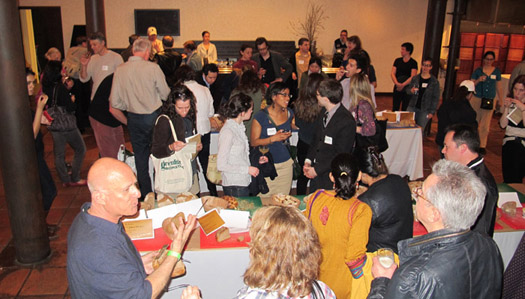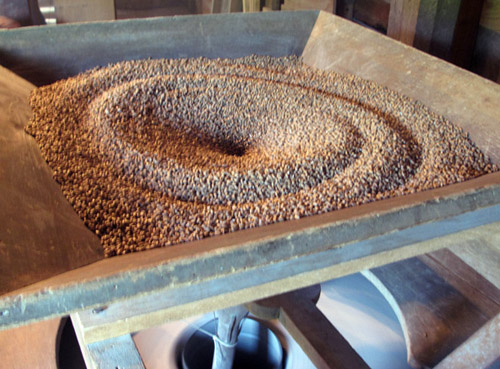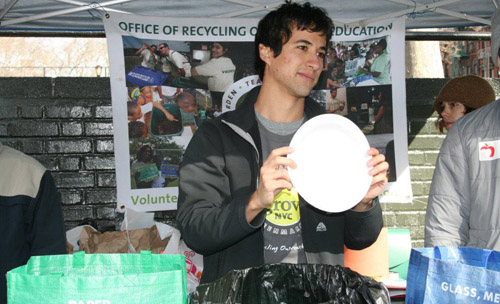
We asked some questions to Michael Mullaley, age 25, an Office of Recycling Outreach & Education volunteer who has been volunteering with us almost every weekend and who has made promoting composting a passion of his ever since moving to NYC from Oregon. Check out our conversation on his volunteerism!
OROE: What prompted you to volunteer with OROE?
Michael: I majored in Environmental Studies in college and have been doing various conservation work over the last couple years. After moving to New York City, I wanted to learn about, and get involved with, environmental organizations here and some of the work that they are doing. OROE’s volunteer opportunities to get out on the ground, talk to people and help educate them about recycling and composting really appealed to me. Also, I wanted to personally learn more about recycling in NYC since guidelines are a little more specific here than back in Oregon.
OROE: What was your best experience volunteering with OROE so far?
Michael: I have two. I really enjoy working up at Inwood because of the sense of community that is generated at a farmers market. All the community members make me feel right at home. The other best experience came when I tabled at the Chinese New Year recycling event. It was very exciting to see the young kids get enthusiastic about the recycling game, and was quite impressive how quickly they picked up all the various details.
OROE: Have you always been a recycling enthusiast?
Michael: Definitely. I was born and raised in Portland, Oregon, where recycling is second-nature. There are much fewer recycling-specific constrictions on items, which makes the overall experience simpler and less confusing. The city’s recycling infrastructure is very well organized too.
OROE: What’s your environmental policy?
Michael: Try and do things that limit my ecological footprint, which means becoming more aware of my actions and its impact on my surroundings. Develop sustainable habits in your everyday life (ie energy and water conservation, public transportation, recycling, collecting food scraps, buying less “stuff”), while trying to get involved with groups and organizations to have a greater environmental impact. Also, it has become a passion and priority to just get out and enjoy nature. Not only is it a chance to revel in the many gorgeous American landscapes, but it helps to put a face on that which is threatened by anthropogenic actions, and why it is so important to conserve, protect and fight for ecosystems.
OROE: What’s your personal philosophy?
Michael: Always be kind, work hard, and be open to new experiences.
OROE: What is your favorite thing about living in New York?
Michael: The wide diversity of people, cultures and languages here are incredible. I also love the public transportation, city parks and the surprisingly large amount of community gardens.
OROE: What is your favorite thing about volunteering in New York?
Michael: Meeting all sorts of people and listening to their individual stories.
OROE: Has volunteering with OROE helped you see New York or New Yorkers in a different light?
Michael: New York is more sustainable than people give it credit for. But there is still plenty of recycling and compost education to be done!
OROE: What upcoming events are you signed on to volunteer for with OROE?
Michael: Compost collection at Inwood, and Earth Day recycling education.
OROE: What are the benefits of volunteering with OROE?
Michael: You get to talk to people about environmental issues and help empower them to take action. In general, you have a chance to give back to the community, support a cause you believe in, gain additional experience you might not have had, and, of course, meet people.





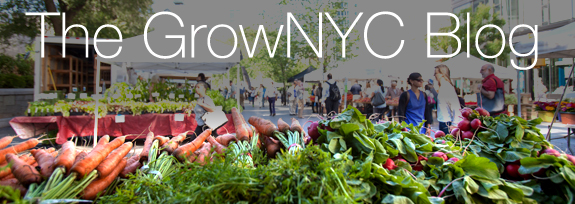
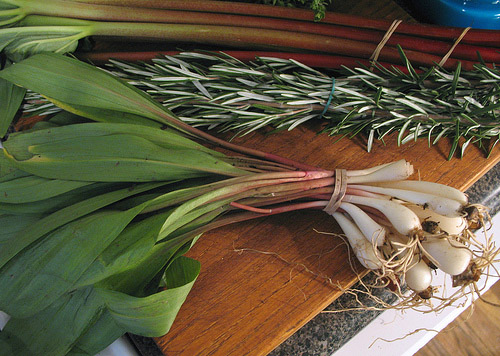 What do airports, interstate highways, skateboard parks, and Greenmarket all have in common?
What do airports, interstate highways, skateboard parks, and Greenmarket all have in common?
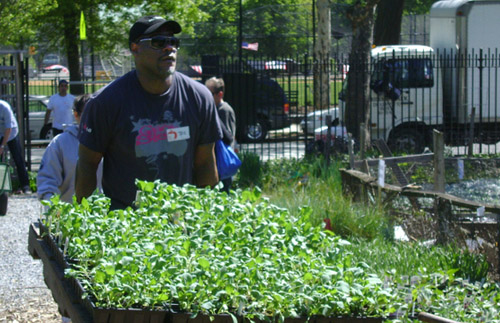 JOE BUCK As an Open Space Greening volunteer with GrowNYC, Joe has led teams of volunteers at Greening's biggest event of the year, the
JOE BUCK As an Open Space Greening volunteer with GrowNYC, Joe has led teams of volunteers at Greening's biggest event of the year, the 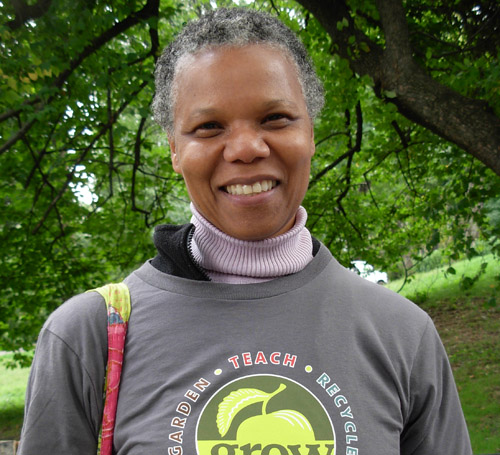 NANCY RAPHAEL As a recycling volunteer with GrowNYC, Nancy has helped teach New Yorkers about composting and contributed to successful recycling at
NANCY RAPHAEL As a recycling volunteer with GrowNYC, Nancy has helped teach New Yorkers about composting and contributed to successful recycling at 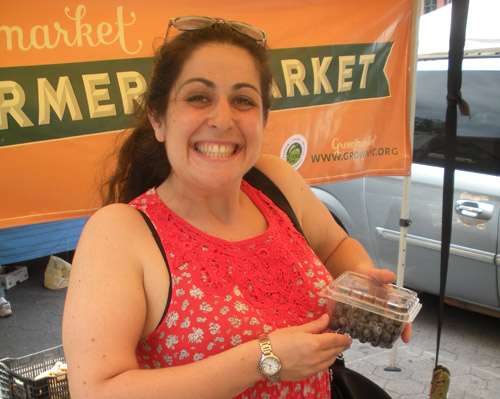 ERIN EASTERN As a Greenmarket volunteer with GrowNYC, Erin staffs
ERIN EASTERN As a Greenmarket volunteer with GrowNYC, Erin staffs 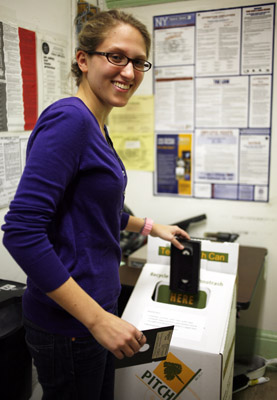 When coming across some of the dated materials accumulating around the GrowNYC office, it’s not hard to believe that we are a 41-year-old organization. We recently discovered a stash of floppy disks and decided to purchase a
When coming across some of the dated materials accumulating around the GrowNYC office, it’s not hard to believe that we are a 41-year-old organization. We recently discovered a stash of floppy disks and decided to purchase a 